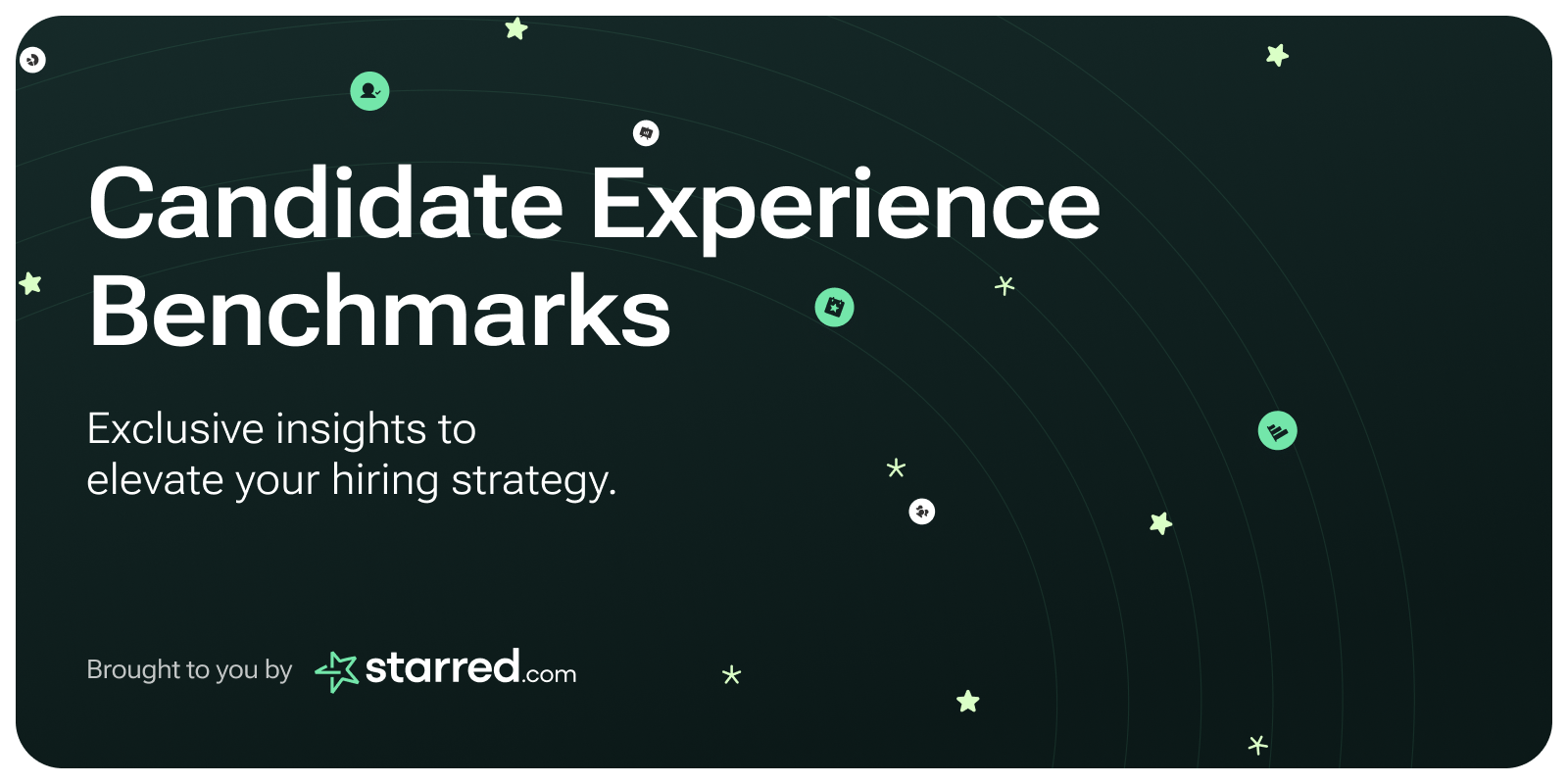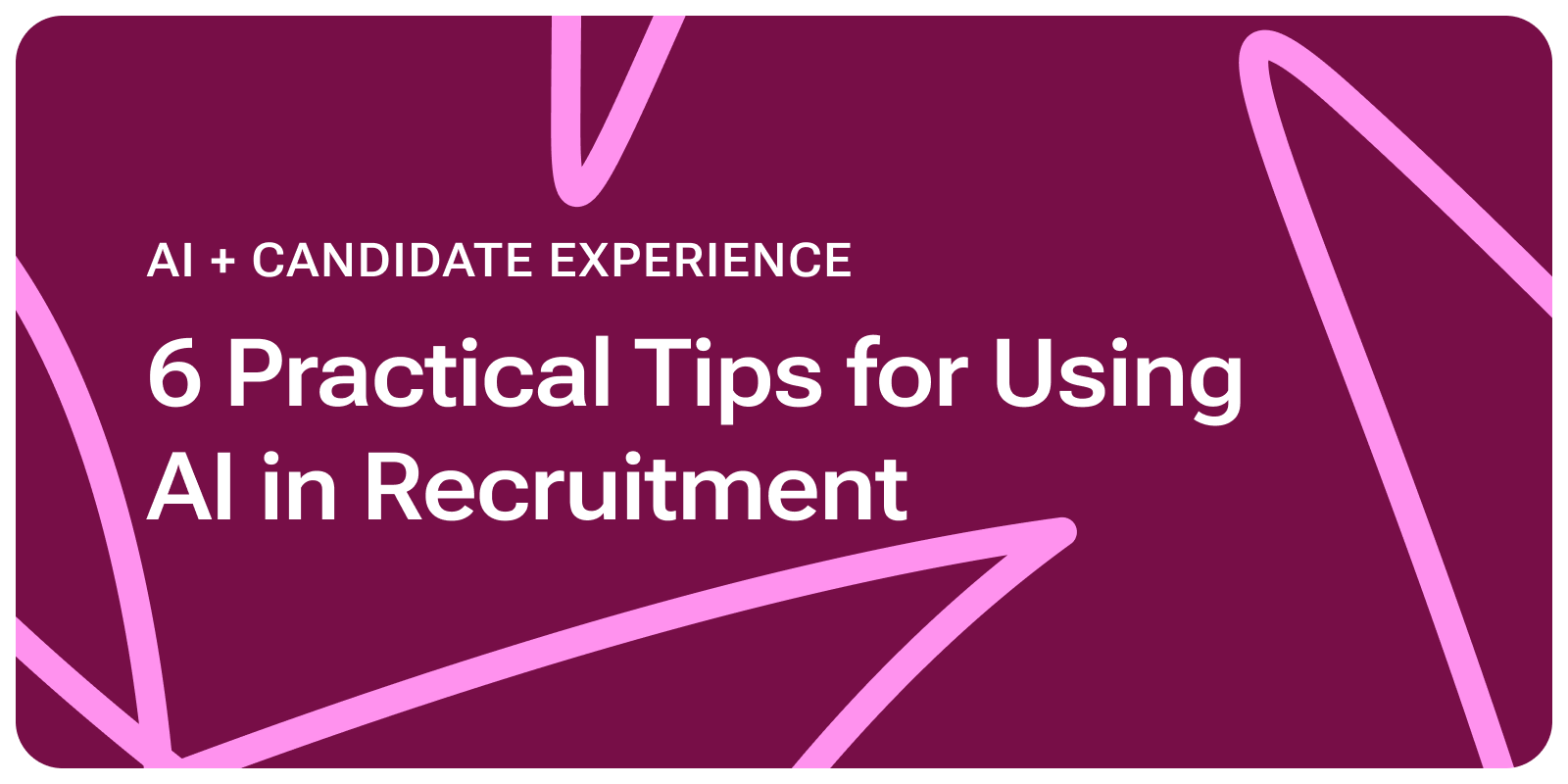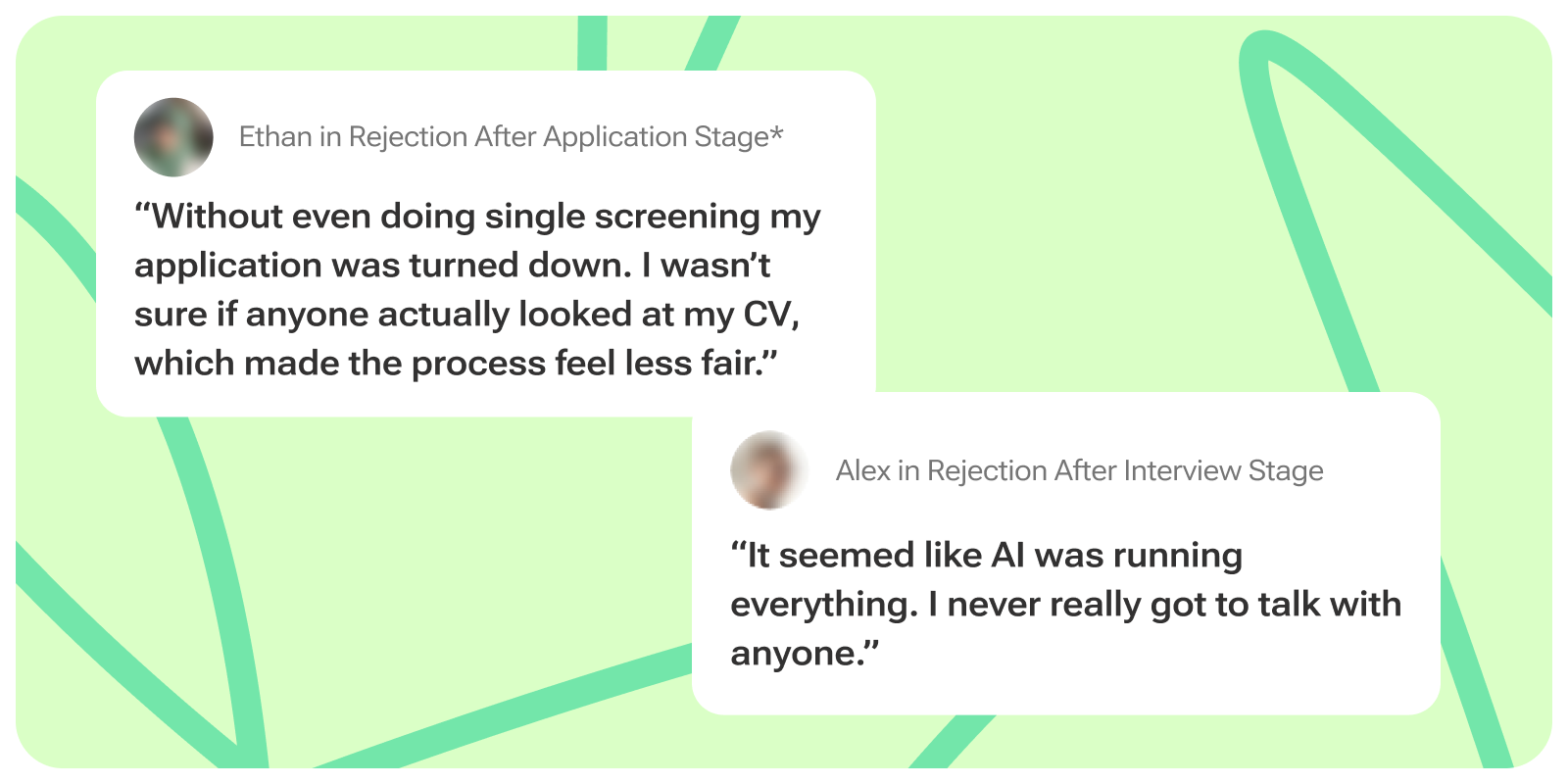Introduction
As AI and automation have become standard in recruitment practices, it’s easy to forget the human side of hiring. But for candidates, how they’re treated during the process often becomes the deciding factor when choosing where to work. Candidate Experience has become one of the most critical factors shaping how people talk about your company, how quickly you fill the roles, and whether top talent chooses you over the competitors or if they will want to engage with you again in the future.
At Starred, we analyze millions of candidate touchpoints every year to understand what makes a hiring experience stand out. Using Candidate Net Promoter Score (cNPS) and candidate comment analysis, we gather feedback from thousands of candidates across industries, company sizes, and regions to create one of the most comprehensive datasets on Candidate Experience in the world.
This blog brings together the benchmarks and insights from our latest Candidate Experience Benchmark report to help Talent Acquisition reflect on their recruitment processes, spot opportunities for improvement, and keep Candidate Experience front and center, even as new technologies transform recruitment.
To access the full dataset and best practices, download our latest Candidate Experience Benchmark Report here!

Key Recruitment Trends That Shape Candidate Experience
Before we get into the Candidate Experience metrics, it’s important to understand how recruitment trends in recent years have shaped hiring practices, talent acquisition teams, and candidate expectations. From the rise of AI and automation to ongoing talent shortages and tighter budgets, these shifts have changed both how companies recruit and how candidates experience the process.
Talent Shortage
The talent shortage isn’t going away anytime soon. According to ManpowerGroup, 74% of employers are still struggling to find the skilled talent they need. OECD data paints a similar picture, with labor force participation rates reaching an all-time high of 70%. In simple terms: most skilled candidates are already employed, and employers need to act quickly when great talent becomes available.
Our report shows that candidates themselves cite “slow processes,” “misaligned expectations,” and “lack of communication” as some of the main reasons they drop out of recruitment pipelines. Despite this, many companies still underestimate the correlation between a smooth, candidate-friendly hiring experience and their ability to secure top talent before competitors do.

AI in Recruitment
With 87% of companies already using some form of AI in their recruitment processes, the momentum of integrating AI-powered tools into everyday hiring workflows is only growing. From generating job descriptions to conducting AI video interviews and analyzing candidate performance, the range of uses is expanding and reshaping how teams approach recruitment at every stage.
In 2024, for the first time, many teams began to experience real benefits from these tools, with 39% of recruitment professionals reporting that AI technologies helped reduce stress in their roles. As the use cases grow, AI is moving from being a “nice-to-have” to an essential part of modern recruitment.
But while automation can make processes faster and more efficient, it’s important to remember that technology alone doesn’t create a positive Candidate Experience. Candidates still value transparency, communication, and human connection. The most successful teams will be those who strike the right balance, using AI to handle repetitive tasks and free up recruiters’ time for meaningful, candidate-first interactions.
“AI and automation is so much easier to drive if you are good at communicating, if you are transparent about what is going on, and of course, also if you engage and involve the stakeholders facing that change.
We see that companies that are successful at this transparent communication are also the ones getting rewarded with higher satisfaction rates.” –Daniel Birkholm, CEO at Starred.com
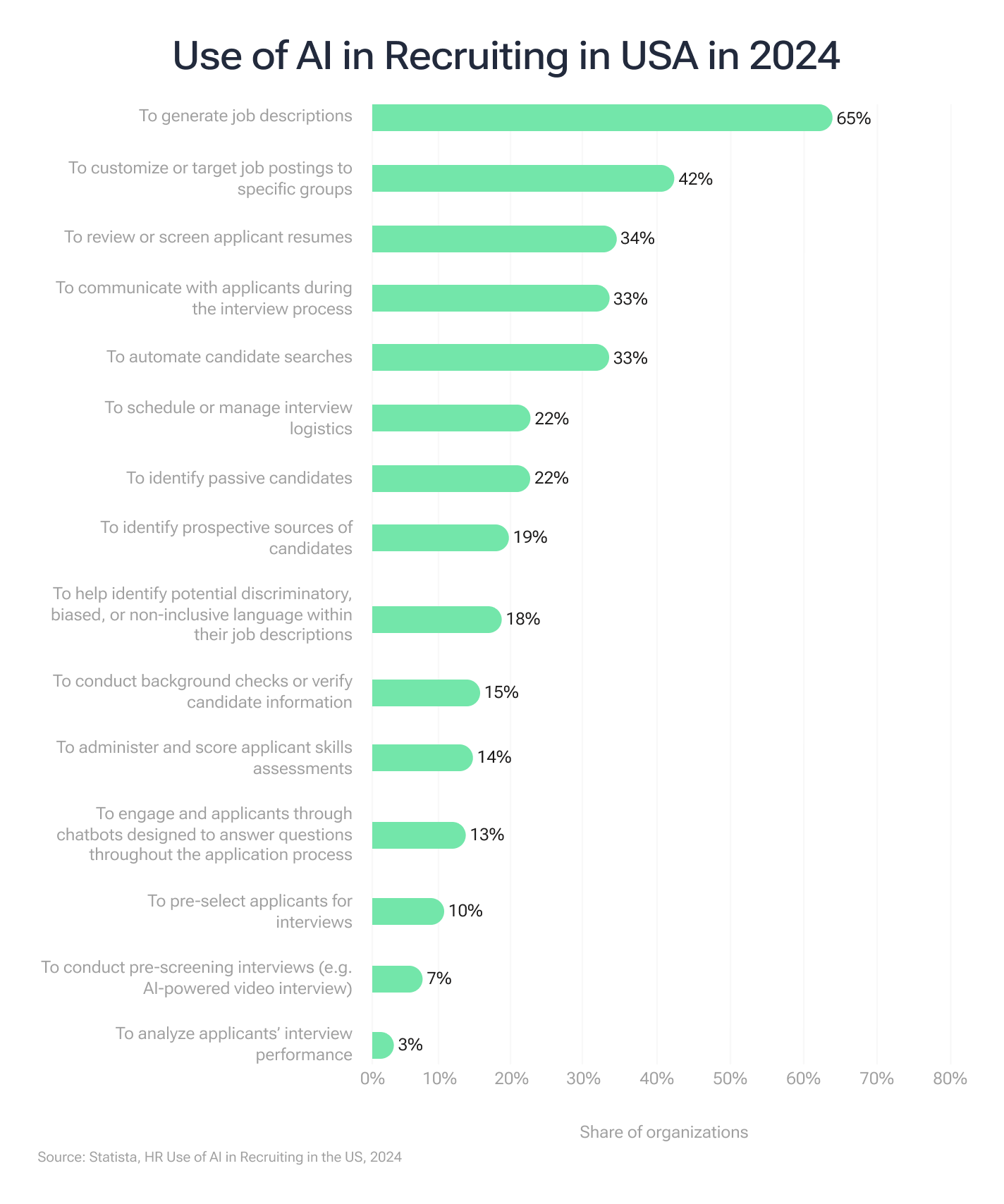
Recruiter Burnout
In 2024, the average recruiter managed 2,526 applications (28% more than in 2023 and 106% more than in 2022), proving that “doing more with less” is not just a meaningless statement; it’s many TA teams’ reality.
While candidate pools have grown, the challenge of finding qualified talent has not gone anywhere. Nearly half of recruiters say their jobs are more stressful today, with 48% citing “not enough qualified candidates” and 44% pointing to “more open roles to fill” as key contributors.
This combination of high-volume applications and limited resources has left many teams stretched thin. And while 84% of TA teams now use analytics to guide their hiring strategy, 87% are still tracking performance in simple spreadsheets, making efficient optimization harder to achieve.
On the bright side, for many companies, prioritizing Candidate Experience has emerged as a way to ease pressure. 56% of companies are using Candidate Experience as one of the main data points of their recruitment analysis. By measuring feedback and benchmarking performance, teams can identify bottlenecks and create a hiring process that works better for both recruiters and candidates.
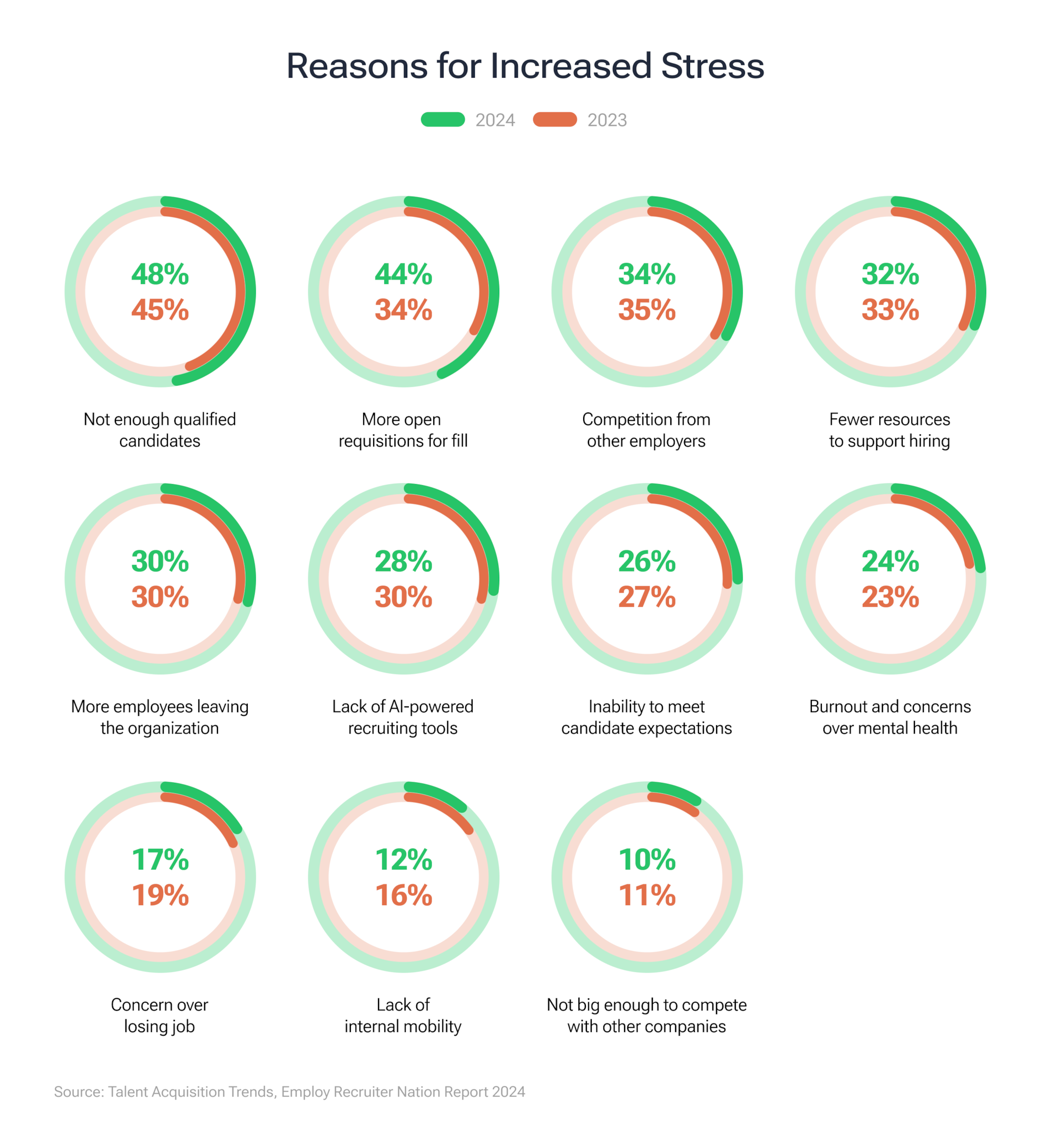
Candidate Experience Benchmarks
At the core of our Candidate Experience report is the Candidate Net Promoter Score (cNPS). This metric captures how likely candidates are to recommend your company to others based on their application experience.
In 2024, the global averages were:
- Hired candidates: +82
- Withdrawn candidates: +40
- Rejected candidates: -6
FAQs
What is Candidate NPS (cNPS)?
Candidate Net Promoter Score measures how likely candidates are to recommend your company based on their experience, even if they weren’t hired. It provides a simple way to benchmark how candidates perceive your hiring process.
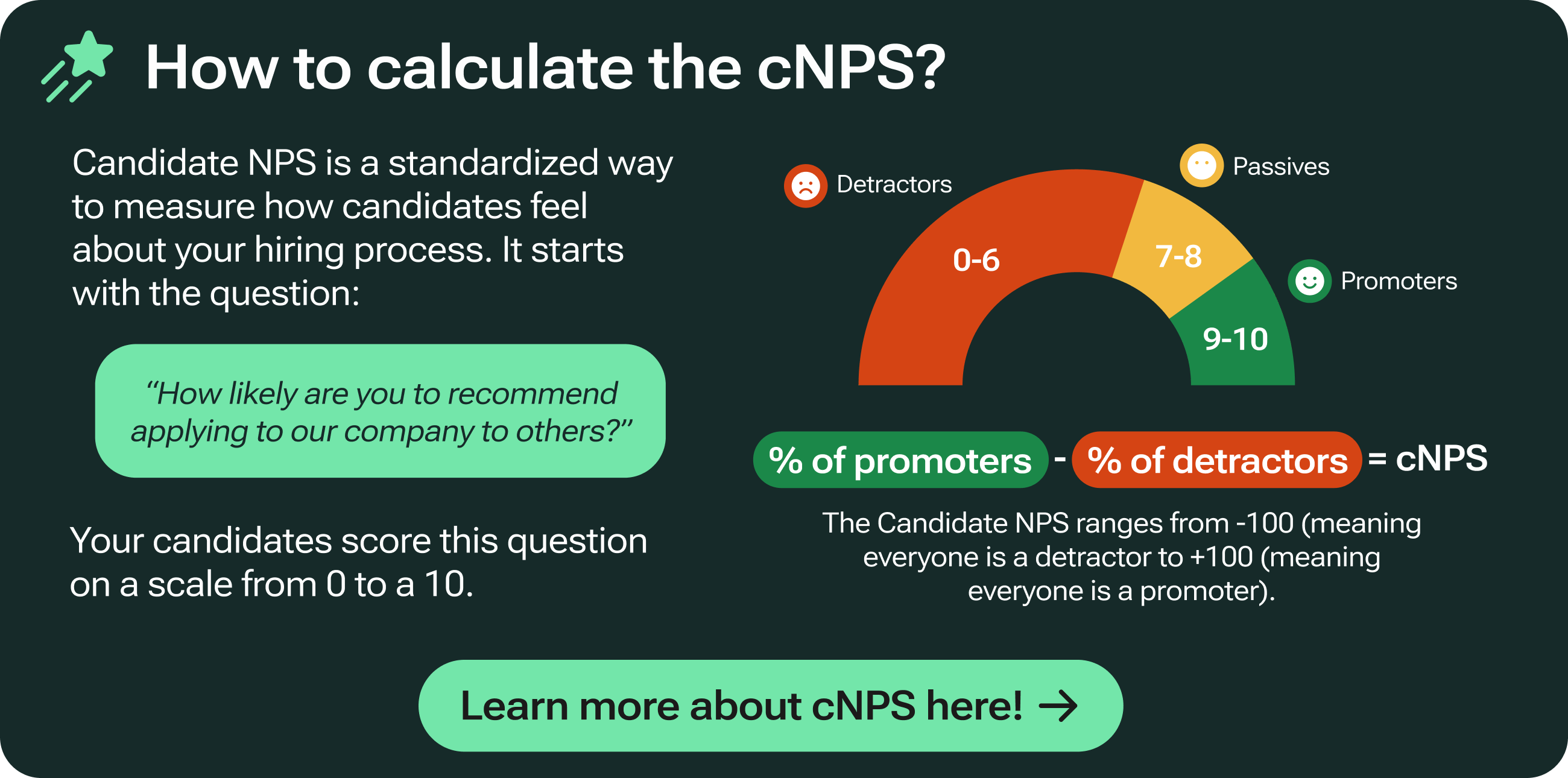
Why is Candidate Experience important?
Candidate Experience directly shapes how people see your company. A positive experience encourages job seekers to reapply, refer others, and even remain loyal customers. But a poor Candidate Experience can damage your reputation, deter future applicants, and hurt your ability to attract top talent. Prioritizing it isn’t just good practice; it’s essential for building a strong employer brand and competitive hiring process.
How do you measure Candidate Experience?
The most effective way to measure Candidate Experience is by collecting feedback at key stages of the hiring process, using surveys that cover the main aspects of the hiring experience. Metrics like cNPS provide a high-level benchmark.
Why benchmark Candidate Experience?
In a competitive job market, staying ahead of the talent shortage means understanding how your hiring experience compares to others. Recruiting benchmarks put your scores into context, helping you identify strengths, uncover weaknesses, and prioritize improvements where they matter most.
How is the data in the benchmark report collected?
The data in Starred’s benchmark report is collected directly from candidates via cNPS surveys, distributed at key stages of the hiring process (application, rejection, withdrawal, and hire). Responses are anonymized and aggregated across industries, company sizes, and regions to produce reliable, large-scale insights.
How often is the benchmark data updated?
The Candidate Experience Benchmark Report is published annually and reflects the most recent year’s data across millions of candidate touchpoints. However, companies using Starred can track their own benchmark position in real-time throughout the year.
Recommended resources to learn more about Candidate Experience:
- The Ultimate Guide to Candidate NPS
- Everything You Need to Know About Recruitment Analytics
- How to Get Started with Candidate Experience Surveys
Key Insights From the 2024 Candidate Benchmark Report
Here are five takeaways from our 2024 Candidate Experience Benchmark Report. These findings highlight where companies are getting it right, where candidates are feeling let down, and what Talent Acquisition teams can focus on to improve their hiring process.
1. Candidate Experience Directly Impacts Hiring Success
Our data shows just how much Candidate Experience can influence business. If we analyze the hiring funnel, for every 1,000 candidates entering a recruitment process, 825 are rejected and 100 withdraw voluntarily, with only a small fraction becoming new hires.
What's even worse, 17% of rejected and 21% of withdrawn candidates have left negative comments about the company they applied to. So now imagine that out of the 925 candidates that didn't get the job offer, 140 rejected and 21 withdrawn candidates could be talking negatively about your process and discourage others to apply or even buy from your company.
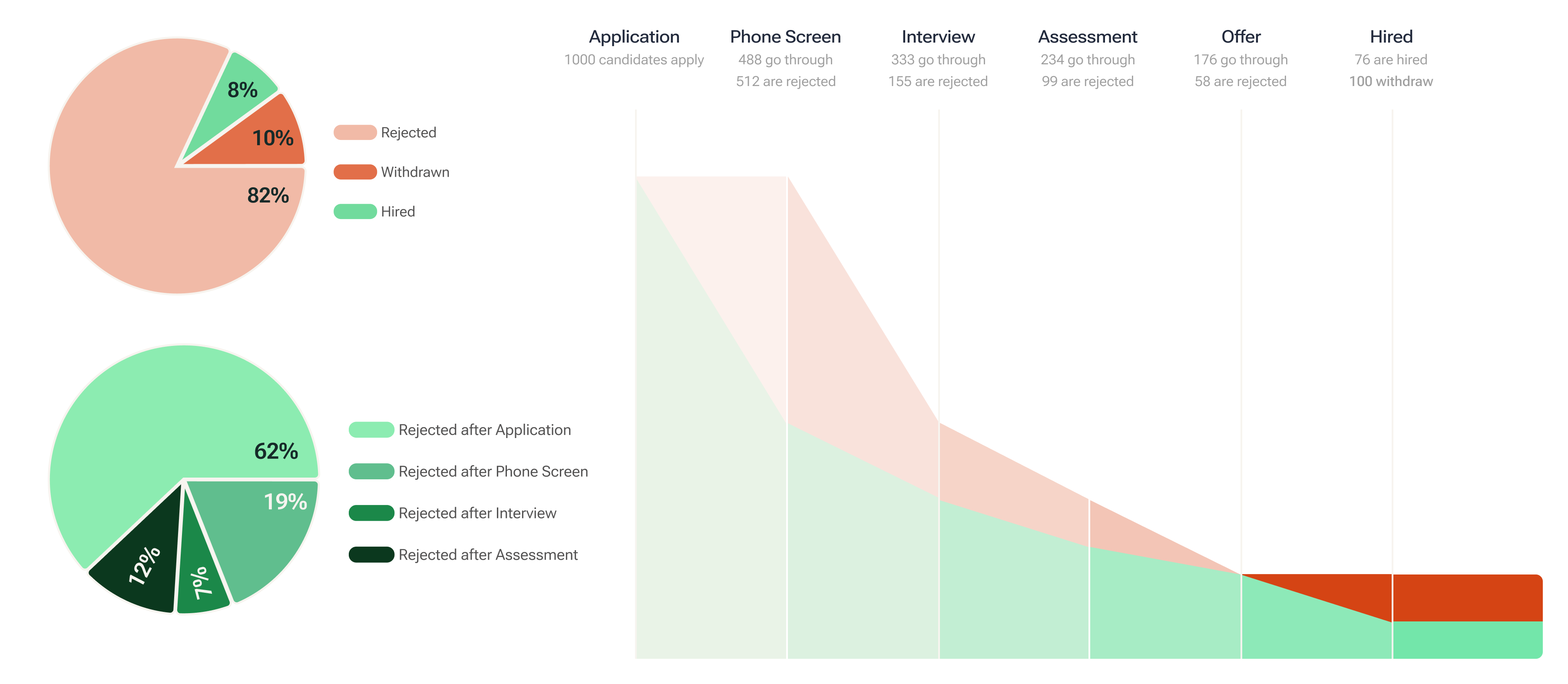
This high rejection and withdrawal rate makes it critical for companies to focus on the quality of the experience, highlighting how critical it is to deliver an exceptional experience at every stage, starting from the application process, where most of the job seekers get rejected (62%). Poor Candidate Experience doesn’t just harm your Employer Brand; it can discourage top talent from reapplying, increase dropouts, and even damage your relationship with potential customers.
2. 48% of Rejected Candidates Don’t Know Why They Were Rejected
We found that 48% of rejected candidates were unhappy with the feedback they received in 2024, while only 33% rated it positively, and 19% remained neutral. Feedback (or the lack of it) remains one of the top three pain points raised across all rejection touchpoints, highlighting just how crucial it is to the overall Candidate Experience.
Companies that take the time to offer thoughtful feedback often see rejected candidates re-engage in the future, whether by reapplying, referring others, or even recommending your company to others. This small investment in communication can transform a negative experience into a constructive one.
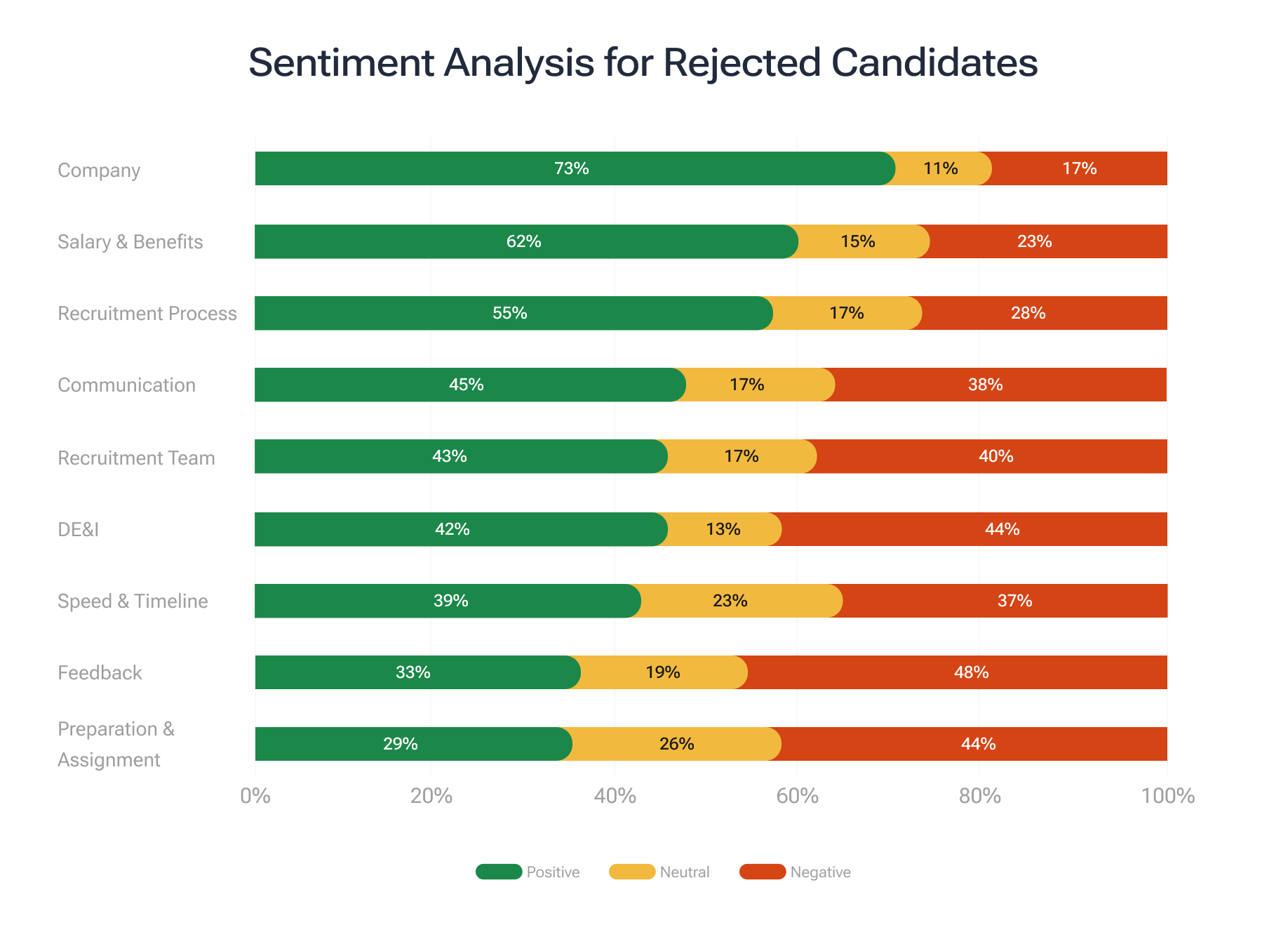
3. 64% of Candidates Quit the Hiring Process Due to Poor Communication
Our analysis of the bottom 25% of withdrawn candidates (all Detractors, scoring 0-6) reveals a clear trend: 64% withdrew due to poor communication. Issues like lack of responsiveness (9%), unclear processes (11%), and misaligned salary expectations (8%) further contributed to their frustration.
Out of all the comments, almost half (43%) were from extremely dissatisfied candidates (scoring 0-1), with many citing ghosting, delayed responses, and a slow hiring process as reasons for withdrawing. Even candidates in the upper range of Detractors (scoring 5-6) shared similar concerns, highlighting that inconsistent communication and long hiring timelines lead to lost talent.

It's clear: when candidates are left waiting or unclear about next steps, they’re more likely to accept offers from companies that move quickly and communicate transparently. As hiring gets more competitive, speed and clarity are critical for keeping top talent engaged and preventing drop-offs.
4. Long, Confusing Assessments Are Driving Candidates Away
Candidates rejected after assessment report the lowest cNPS scores of all rejection stages, with an average of -23. For context, candidates rejected after the interview process rate their experience 138% higher on average.
Why? By the assessment stage, candidates have already invested significant time and effort, often completing multiple interviews, cognitive tests, or case studies. If the outcome results in a rejection, this mismatch between effort and result can create frustration and leave a lasting negative impression.
Out of the unhappiest 25% of candidates, 79% criticized the structure and design of assessments, while 21% questioned their relevance to the role. Many also pointed to inconsistent recruiter communication and a lack of clarity around expectations.
While rejections at this stage are unavoidable, companies can improve candidate sentiment by ensuring assessments are relevant, well-structured, and paired with clear, respectful communication throughout the process.
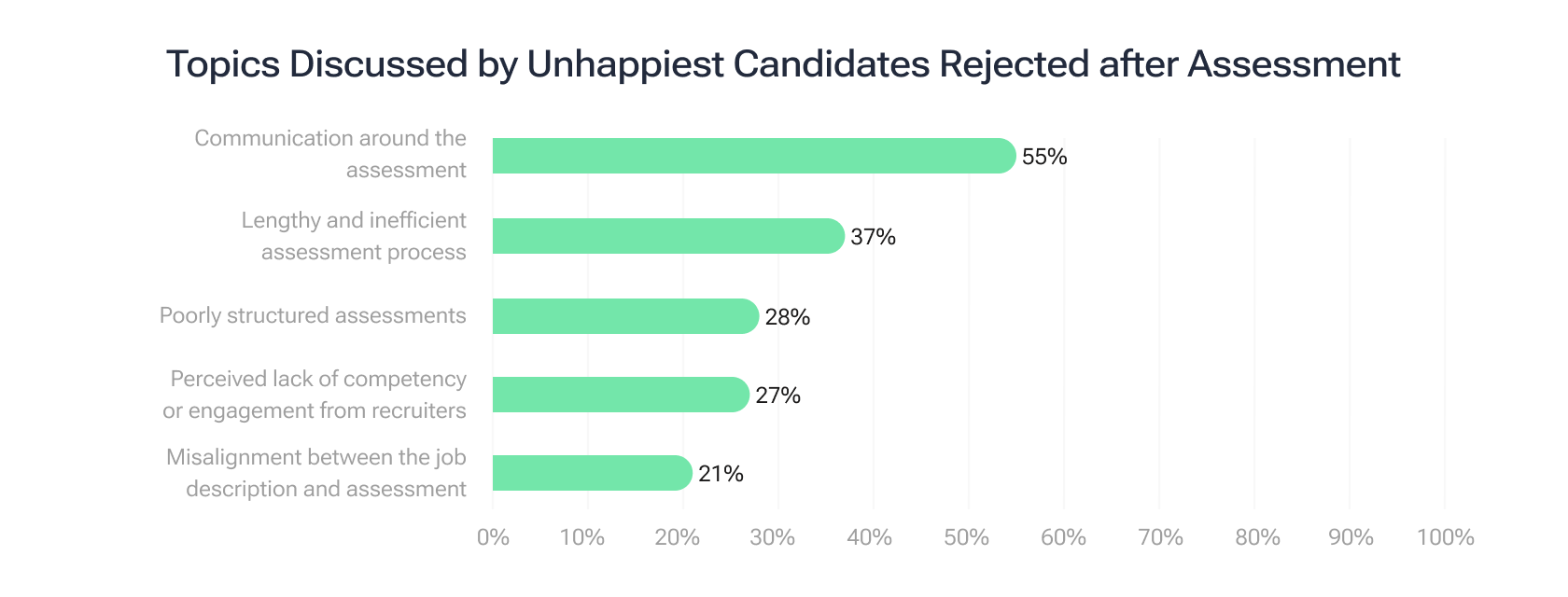
5. Internal Mobility and Referrals Drive the Best Results
Internal applicants and referred candidates had the highest success rates in hiring. Despite making up only 1.10% and 5.98% of applicants, respectively, internal candidates have a 45% success rate, while 25% of referred candidates are hired. This shows the value of internal mobility and referral programs for sourcing high-quality candidates.
Offering employees opportunities to move within the organization fosters retention, reduces onboarding time, and ensures cultural fit. Enhancing referral programs can further boost hiring quality by incentivizing employees to recommend candidates who align with company culture.
As talent shortages persist, internal hires and referral programs can be a crucial strategy for maintaining a skilled and engaged workforce.
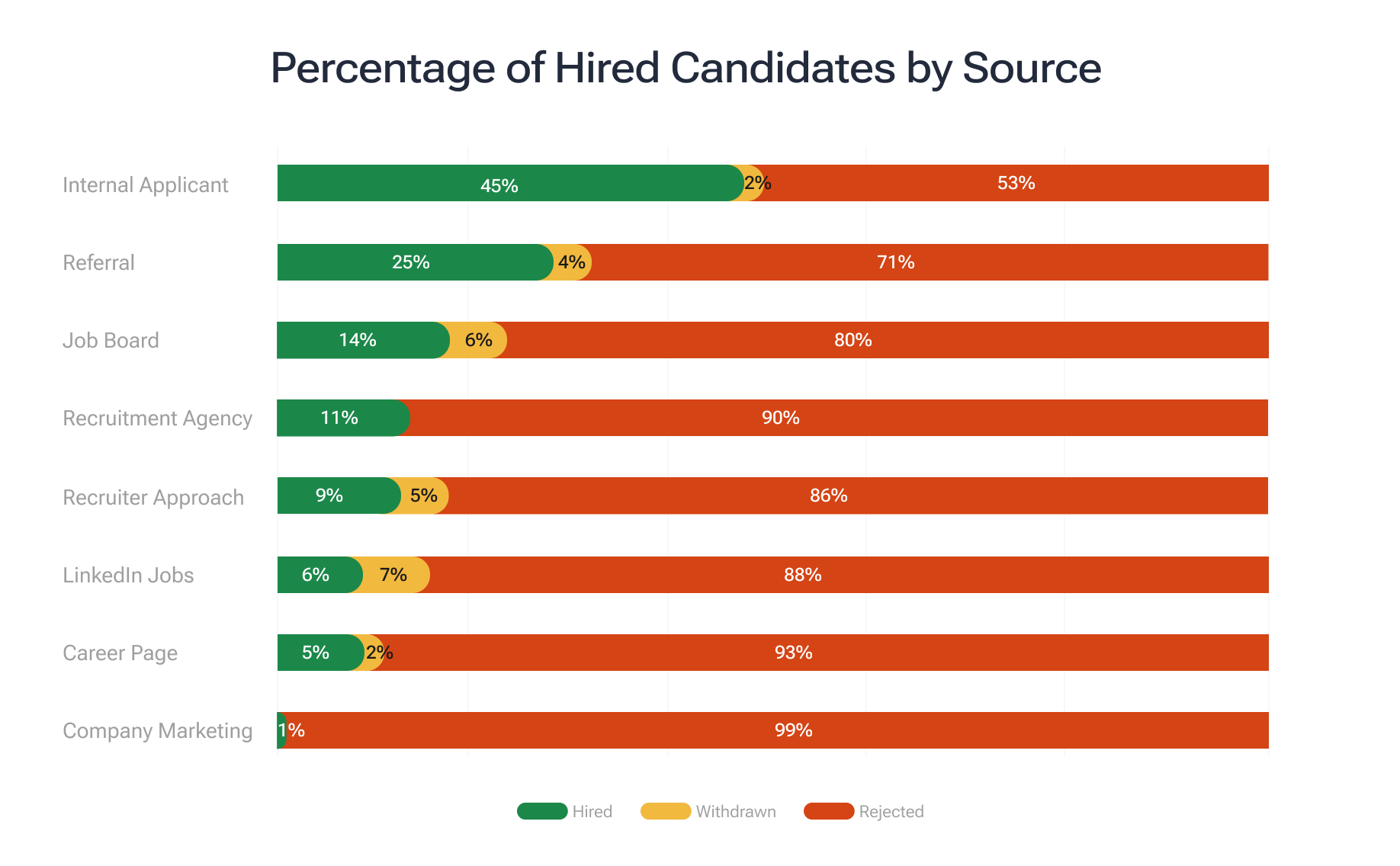
5 Tips From Top TA Teams to Improve Candidate Experience
High-performing companies are taking a proactive approach to Candidate Experience, setting the standard for what great hiring looks like. For this year’s report, we asked Talent Acquisition leaders from the top 10 companies with the highest cNPS scores to share their tips and best practices. Here’s what they’re prioritizing in 2025:
1. Aligning With Hiring Managers
"Our primary goal for 2025 is to continue improving Candidate Experience scores while aligning them more closely with hiring manager feedback. We aim to streamline feedback loops, making candidate insights more directly accessible to hiring managers." –Mathias Agu, Senior Talent Acquisition Manager at Immutable
2. Focusing on Communication and Transparency
"Our goal is to maintain a seamless Candidate Experience through consistent communication and transparency. We are focused on enhancing process consistency across all departments and are currently refreshing our jobs page to better showcase Prosper’s brand and culture." –Sana Khalid, Manager, TA Operations at Prosper
3. Strengthening the Employer Branding
"For 2025, we’re focusing on enhancing both Employer Branding and Candidate Experience, as they’re closely connected. We’ve noticed that countries actively using Starred consistently score higher in candidate satisfaction, which shows a clear correlation between leveraging this tool and delivering a better recruitment experience." –Tina Jaltved, Global Head of Talent Acquisition at DSV
4. Giving Personalized Feedback
"We want to continue providing personalized feedback through direct emails or phone calls for final-stage candidates and further align global recruiting standards. As well, for us it remains a priority investing in AI to manage every recruiting step better and to enhance and customize the candidate journey even more." –Florian Conradi, Head of Talent & Organizational Development at SMG
5. Improving Candidate Assessments
"Our goal is to build on what we’ve already done while constantly refining our processes. We treat our candidates like customers and aim to provide a smooth, consumer-grade experience at every touchpoint. One big focus is on revamping our engineering assessments. We want them to be relevant and useful, but also respectful of candidates’ time—avoiding overly long or complex tasks." –Tom Palmer, Senior Manager, Talent Acquisition at Zip Co
Summary
As AI and automation transform recruitment, the human side of hiring has become a critical differentiator. Our 2024 Candidate Experience Benchmark Report highlights how candidates can impact hiring success, employer branding, and even retention.
Here’s what we found:
- Talent shortages persist: 74% of employers still struggle to find skilled talent, and slow, misaligned processes are pushing candidates away.
- AI is here to stay: 87% of companies use AI in recruitment, but balancing automation with human connection is key to positive experiences.
- Candidate Experience directly affects hiring success: For every 1,000 candidates, 825 are rejected and 100 withdraw, highlighting the importance of good Candidate Experience in every step of the hiring funnel.
- Communication matters: 64% of candidates who withdraw cite poor communication as their reason for dropping out.
- 48% of rejected candidates don’t understand why they were rejected, underscoring the need for clear and constructive feedback.
- Assessments are a major frustration point: candidates rejected after assessments reported the lowest cNPS score (-23).
- Internal mobility and referrals work: Internal applicants and referrals have the highest hiring success rates (45% and 25%, respectively).
Top-performing companies are already focusing on better communication, employer branding, personalized assessments and aligning with hiring managers to raise the bar in 2025.
Download the Candidate Experience Benchmark Report
By putting together our Candidate Experience statistics and first-hand candidate comments, we’ve prepared an overview of the opportunities and challenges faced by TA teams in 2024, broken down by company size, candidate source and department. All with candidates at the center.
In this report find:
- Key trends shaping the Talent Acquisition landscape in 2024
- Actionable tips and best practices from this year's Top cNPS leaders [NEW!]
- All raw cNPS benchmark data in the appendix
Download the latest Candidate Experience Benchmark report here!


